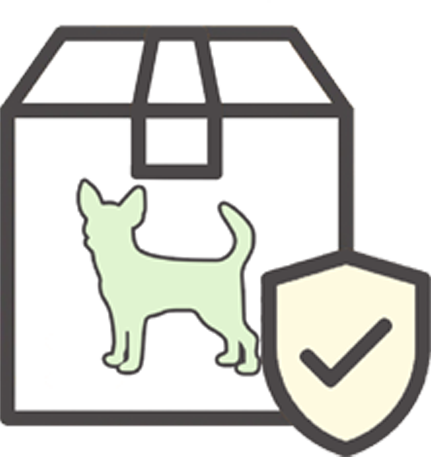A Basic Crate Training Schedule
Tuesday, October 18, 2016 03:26:00 PM America/Los_Angeles
If you’re looking for an effective way to train your dog, then you may want to consider a crate training schedule. When it comes to house training your furry friend, using a crate is a proven method of doing so and is recommended across the nation by known trainers. Dogs instinctively want to keep their resting area clean and dry. Because dogs want to keep their area clean, they aren’t likely to go potty when confined to their crate. If you immediately encourage your dog to “take care of its business” after releasing them from the crate, you're instilling good habits as well as letting your pet know that the proper place to go is. Keeping a DoggieLawn in your home can make this process whole lot easier--your dog will know that the crate is for resting and that the grass dog potty is for peeing!
 Source: mp.j/Shutterstock
Source: mp.j/Shutterstock
You don’t need to worry about your dog feeling trapped either, as dogs are naturally den animals. Much like the wolves they were bred from, domestic dogs will seek out small places that mimic a den, providing them a space that isn’t under your bed or desk. Dog crates are excellent dens and can double as a hangout and bedroom. However, you must never use the crate as punishment, as training generally only works if the create is a safe place for your dog to retreat to.
Before beginning to crate train your dog, you'll first have make sure you purchase the proper size. If you’re buying a crate for your new puppy, buy one that will eventually fit even once they're full grown. If your dog is already fully grown, make sure there's enough space for your dog to walk about, stand up, and turn around, but no larger. If the crate is too large, your dog may decide to use a corner of it for the restroom.
If at all possible, don’t put food in the crates as this will create the urge to “go.” You may provide a small amount of water, but remember that this will induce urination. Additionally, don’t put bedding or newspapers in the crate as they'll be seen as a place to go to the restroom and then be covered. This will cause issues in learning proper behavior.
Be sure to place the crate in a busy area of the house so the dog can interact with its “pack” while still inside its "den”. Don’t have the crate in a draft or direct heat. Be sure to remove all collars or tags before placing a puppy in a crate, to prevent possible strangulation if they get caught.
Do not force your dog into their crate, and be sure to praise them EVERY time they enter on their own. Allow them to explore the crate at their own pace. Encourage this by tossing in a favorite toy or treat, and leave the door open during this introductory stage. If your pet barks or whines while in the crate, reassure them but wait until they calm down before letting them out. You don’t want them to think they can come out every time they respond negatively. When you do let your dog out, take them to the same potty grass area to use the restroom each time. They'll eventually begin to associate the DoggieLawn with doing their business.
 Source: WilleeCole Photography/Shutterstock
Source: WilleeCole Photography/Shutterstock
Below is a sample basic crate training schedule for puppies and adult dogs. Be aware that you can modify this sample puppy schedule to fit your needs. Remember, house training a puppy using a crate is a temporary tool to get your dog to be housetrained.
MORNING
7:00 Take dog outside before starting morning routine
7:15 – 7:30 Play time (if worried about accidents, stay off carpeted areas and play around their DoggieLawn).
7:30 – 8:00 Feed and provide water, allow fifteen or so minutes for digestion, and then place in crate
8:00 Take dog outside
8:15 Place dog in crate
AFTERNOON
12:00 Take dog outside
12:15 - 12:30 Play time
12:30 – 1:00 Feed and provide water, allow fifteen or so minutes for digestion, and then place in crate
1:00 Take dog outside
1:15 Place dog in crate
EVENING
6:00 Take dog outside
6:15 – 6:30 Play time
6:30 – 7:00 Feed and wprovide water, allow fifteen or so minutes for digestion, and then place in crate
7:00 – 8:00 Take dog outside
8:00 – 9:00 Play time
9:00 Return dog to crate
11:00 Take dog outside
11:15 Return dog to the crate for the remainder of the evening
Patience is the key to successful crate training! If you need help with potty training you can rely on a DoggieLawn to help you out with that. It's real grass so dogs are instinctively attracted to it. If you have any friends who have dogs that have frequent accidents in the house you can send them THIS LINK for a disount on their first DoggieLawn grass pad!


